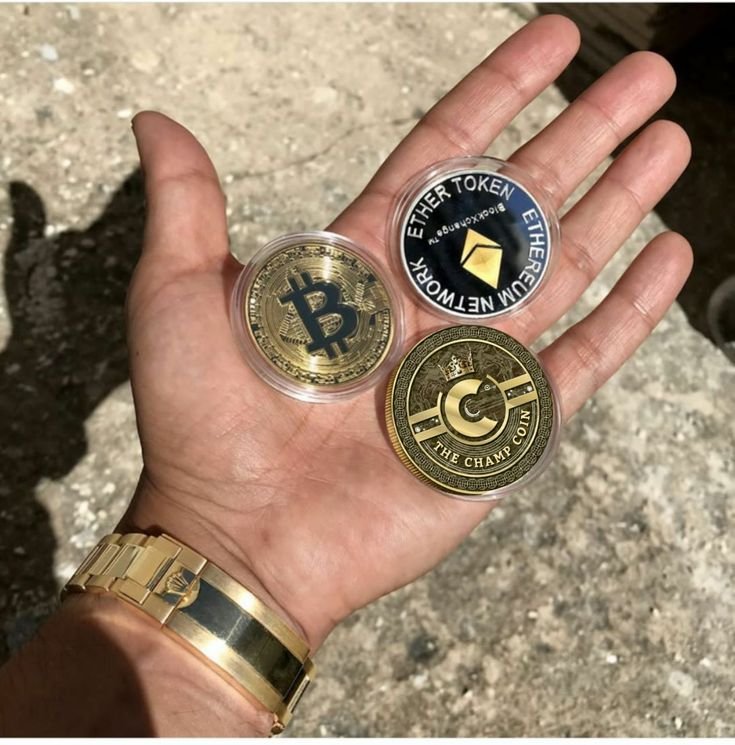Understanding Security Token Offerings (STOs): A Comprehensive Guide
In recent years, the financial world has witnessed a growing interest in blockchain technology and its potential to revolutionize various industries, including finance. One of the most significant developments in this space is the emergence of Security Token Offerings (STOs). STOs represent a new way of raising capital, combining the benefits of blockchain technology with the regulatory framework of traditional securities. This article will explore what Security Token Offerings are, how they work, their advantages and challenges, and their potential impact on the future of finance.
What is a Security Token Offering (STO)?
A Security Token Offering (STO) is a fundraising method in which an entity issues security tokens to investors in exchange for capital. Unlike traditional Initial Coin Offerings (ICOs), where tokens are often utility tokens that provide access to a product or service, security tokens are digital assets that represent ownership in an underlying asset, such as shares in a company, real estate, or bonds. These tokens are issued on a blockchain and are subject to federal securities regulations, providing investors with certain legal protections.
Security tokens are designed to function similarly to traditional financial securities, such as stocks or bonds, but with the added benefits of blockchain technology. They can represent a wide range of financial instruments, including equity, debt, revenue shares, or even a stake in a real estate project. The key characteristic of security tokens is that they derive their value from an external, tradable asset, and they provide the holder with ownership rights, dividends, or other financial benefits.
How Does an STO Work?
The process of conducting a Security Token Offering involves several key steps, including the issuance of tokens, compliance with regulations, and the use of blockchain technology to facilitate transactions. Here’s a breakdown of how an STO typically works:
- Token Issuance: The first step in an STO is the issuance of security tokens. This involves defining the terms of the offering, such as the number of tokens to be issued, the price per token, and the rights associated with each token. The entity conducting the STO, known as the issuer, may use a smart contract to create and manage the tokens on a blockchain.
- Compliance with Regulations: One of the main differences between STOs and ICOs is the focus on regulatory compliance. Because security tokens are considered securities, they must adhere to the securities laws of the jurisdiction in which they are offered. This typically involves registering the offering with the relevant regulatory authorities, such as the U.S. Securities and Exchange Commission (SEC) in the United States, or ensuring that the offering qualifies for an exemption from registration, such as Regulation D or Regulation S.
- Investor Accreditation: Depending on the jurisdiction and the type of offering, the issuer may be required to limit the sale of security tokens to accredited investors—those who meet certain income, net worth, or professional experience criteria. This is often done to protect retail investors from high-risk investments.
- Distribution and Trading: Once the tokens are issued, they are distributed to investors in exchange for capital. These tokens can then be traded on secondary markets, such as security token exchanges or alternative trading systems (ATS), subject to the restrictions and regulations governing their trading.
- Governance and Reporting: As security tokens are tied to real-world assets, issuers are typically required to provide regular updates and reports to token holders, similar to the requirements for publicly traded companies. This ensures transparency and helps maintain investor trust.
Advantages of Security Token Offerings
Security Token Offerings offer several advantages over traditional fundraising methods and other blockchain-based fundraising models like ICOs. These benefits have contributed to the growing popularity of STOs among issuers and investors alike:
- Regulatory Compliance: One of the most significant advantages of STOs is their adherence to regulatory frameworks. By complying with securities laws, STOs offer greater protection to investors, reducing the risk of fraud and ensuring that issuers are held accountable. This regulatory compliance also helps to legitimize the offering, making it more attractive to institutional investors.
- Liquidity: Security tokens can be traded on secondary markets, providing liquidity to investors who might otherwise have to wait years to sell their shares or interests in a traditional private equity investment. This liquidity is particularly appealing to investors who value the ability to exit their positions easily.
- Fractional Ownership: Security tokens enable fractional ownership of assets, allowing investors to buy small portions of expensive assets, such as real estate or fine art. This democratizes access to high-value investments and opens up new opportunities for diversification.
- Lower Costs: The use of blockchain technology can reduce the costs associated with issuing and trading securities. For example, the automation provided by smart contracts can eliminate the need for intermediaries, such as brokers or clearinghouses, reducing transaction fees and processing times.
- Global Accessibility: Because security tokens are issued on a blockchain, they can be accessed by investors worldwide, subject to local regulations. This global accessibility allows issuers to reach a broader investor base and raise capital more efficiently.
- Transparency: Blockchain technology provides a transparent and immutable record of all transactions, making it easier for regulators, investors, and issuers to track the ownership and transfer of security tokens. This transparency helps to build trust and confidence in the offering.
Challenges and Risks of Security Token Offerings
Despite their many advantages, Security Token Offerings also come with challenges and risks that issuers and investors must consider:
- Regulatory Complexity: While regulatory compliance is a key advantage of STOs, navigating the complex web of securities laws across different jurisdictions can be challenging. Issuers must ensure that they comply with all applicable regulations, which can be time-consuming and costly. Additionally, regulatory requirements may vary significantly between countries, adding to the complexity of conducting a global STO.
- Market Adoption: Although STOs are gaining traction, the market for security tokens is still in its early stages. This means that the infrastructure for trading and managing security tokens is not yet fully developed, and there may be limited liquidity in the secondary markets. Investors and issuers must be prepared for the possibility of lower trading volumes and longer times to sell tokens.
- Technology Risks: Security tokens are built on blockchain technology, which, while innovative, is still relatively new. There are risks associated with the underlying technology, such as smart contract vulnerabilities, cyberattacks, and technical failures. These risks can potentially result in the loss of funds or disruption of the STO process.
- Investor Education: Security tokens represent a new and complex financial instrument, and many investors may not fully understand the risks and benefits associated with them. Issuers must invest in educating potential investors to ensure they make informed decisions. Lack of understanding could lead to misinformed investment choices and potential disputes.
- Legal and Regulatory Uncertainty: The regulatory environment for security tokens is still evolving, and there may be legal uncertainties that could impact the offering or trading of security tokens. For example, changes in regulations or legal interpretations could affect the status of security tokens, leading to potential legal challenges or restrictions on trading.
- Custody and Security: Managing and securing security tokens requires specialized knowledge and infrastructure. Unlike traditional securities, which are typically held in centralized depositories, security tokens are often held in digital wallets. This raises concerns about the security of these wallets, as they can be vulnerable to hacking or loss of private keys.
The Future of Security Token Offerings
The future of Security Token Offerings looks promising, as they offer a new way to raise capital while combining the benefits of blockchain technology with the security and compliance of traditional financial instruments. As the market for security tokens continues to develop, we can expect several trends and developments to shape the future of STOs:
- Increased Institutional Participation: As regulatory frameworks become clearer and the market infrastructure for security tokens improves, institutional investors are likely to become more involved in STOs. This could lead to larger, more significant offerings and increased liquidity in the secondary markets.
- Expansion into New Asset Classes: While security tokens have primarily been used to represent equity and debt instruments, there is potential for their use in a wide range of asset classes, including real estate, commodities, intellectual property, and more. This could open up new opportunities for investment and diversification.
- Integration with Traditional Finance: The lines between traditional finance and blockchain-based finance are likely to blur as security tokens become more integrated with existing financial systems. We may see the development of hybrid financial products that combine the best aspects of both worlds, offering investors new ways to participate in the market.
- Improved Regulatory Clarity: As the market for security tokens grows, regulators around the world are likely to provide more clarity on how these instruments should be treated under existing securities laws. This could lead to more standardized practices and greater confidence among issuers and investors.
- Technological Advancements: Continued advancements in blockchain technology, such as the development of more secure and scalable networks, could address some of the current challenges facing STOs. For example, improvements in smart contract security and the development of decentralized custody solutions could make security tokens more attractive to a broader audience.
- Globalization of Capital Markets: Security tokens have the potential to create more interconnected and globalized capital markets. By enabling cross-border investment and reducing the barriers to entry for both issuers and investors, STOs could help to democratize access to capital and create new opportunities for growth and innovation.
Conclusion
Security Token Offerings represent a significant evolution in the world of finance, offering a new way to raise capital that combines the benefits of blockchain technology with the security and compliance of traditional securities. While STOs offer many advantages, including regulatory compliance, liquidity, and global accessibility, they also come with challenges that must be carefully managed.
As the market for security tokens continues to mature, we can expect to see increased adoption by both issuers and investors, as well as the development of new financial instruments and investment opportunities. By understanding the risks and rewards associated with STOs, participants in this emerging market can position themselves to take advantage of the opportunities offered by this innovative fundraising method.
In the years to come, Security Token Offerings have the potential to transform the way capital is raised and invested, creating a more efficient, transparent, and inclusive financial system that benefits issuers and investors alike.
ALSO READ: The Future of Cross-Chain Interoperability in Cryptocurrencies




